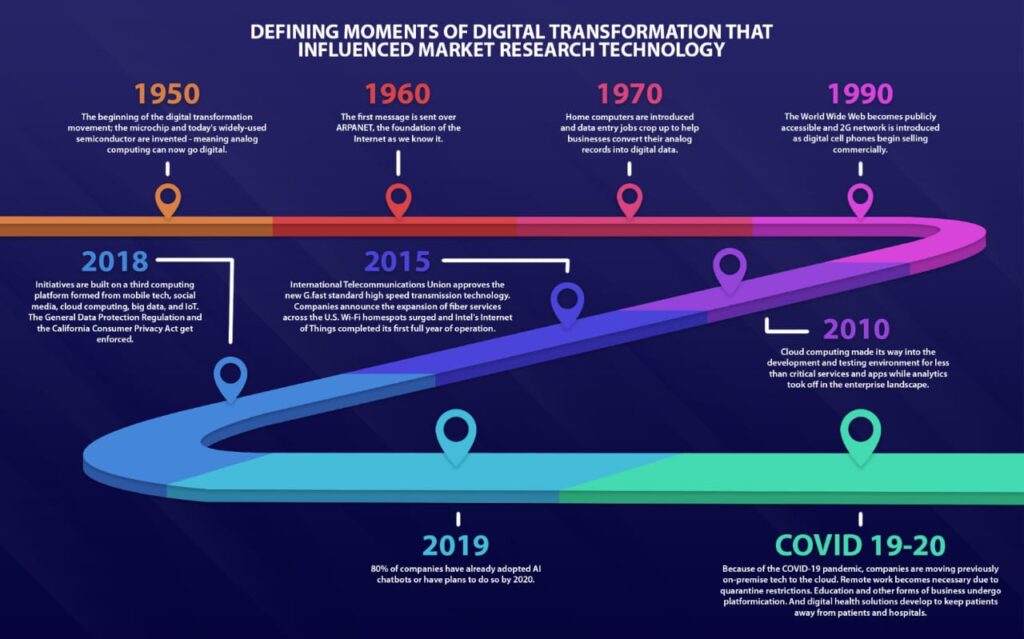
Market research has undergone significant changes in the last decade. Where researchers once relied on phone calls, mailed surveys and slow manual analysis, today’s teams use digital tools, AI and real-time data streams. For business and tech leaders, this change means faster decisions, deeper customer understanding, and new risks to manage. This article explains the main tools, the benefits they bring, and the challenges leaders must face.
What “digital” market research looks like now
Digital market research encompasses a wide range of data types and tools. Common elements include online surveys, social-listening platforms that read public posts, passive data sources such as web and app behaviour, online panels and communities, and AI tools that analyse text, audio and video. Many platforms now utilise analytics and dashboards to help teams see signals quickly and share them across the company. These capabilities ensure market research is continuous rather than episodic.
Key tools to know
- Online survey platforms (e.g., SurveyMonkey, Typeform, Qualtrics) are fast ways to collect responses at scale and analyse results.
- Social-listening and brand-monitoring tools (e.g., Brandwatch) can scan public conversations to surface sentiment, spikes and competitor moves.
- AI and NLP engines are used to summarise open-ended answers, tag themes, and generate quick reports from unstructured data.
- Passive and alternative data sources such as web clickstreams, transaction feeds, and third-party panels that reveal real behaviour rather than stated intent.
- Integration & decision platforms utilise software that pushes insights into CRM, product roadmaps or executive dashboards so teams act faster.
Top benefits for business and tech leaders
- Speed and agility. Digital tools shorten the time from question to insight, sometimes from weeks to hours. Faster insight allows teams to react to market shifts or competitive moves quickly.
- Deeper, richer signals. Combining survey answers with behavioural and social data provides a fuller picture of customers — what they say, what they do, and how they feel.
- Better personalisation and targeting. Insights from digital sources enable more relevant offers, improved product fit, and marketing that resonates with specific segments. Research shows personalisation can meaningfully increase engagement and spend.
- Cost efficiency and scale. Digital methods reduce travel, recruitment and transcription costs, enabling smaller teams to run more studies across larger geographies.
New use cases that add real value
Digital market research now powers use cases that were once separate from research teams. Product teams use rapid customer feedback to shape roadmaps. Sales and marketing teams get competitive signals to tailor pitches. Strategy teams use aggregated trends for scenario planning and M&A diligence. These use cases turn market research from a reporting function into a practical decision engine.
Major challenges and how they show up
- Data quality and bias. More data does not always mean better answers. Passive signals may be noisy, panels can be unrepresentative, and AI models can reflect biases in training data. Teams need robust sampling plans and validation steps.
- Privacy and regulation. Collecting and combining digital traces raises privacy risks. Laws like GDPR and CCPA, including evolving regulations worldwide, mean firms must be careful about handling consent, storage and cross-border transfers. Privacy concerns also affect respondents’ willingness to share information.
- Interpretability of AI. AI can produce fast summaries, but leaders need transparency. Understanding how models reach conclusions and being able to explain them to stakeholders is essential for building trust and compliance.
- Tool sprawl and integration. Teams often adopt many point tools. Without a data strategy and integrations, insights stay siloed and lose impact. Investing in connectors and governance is advisable to ensure intelligence operations.
Practical steps for leaders
- Start with decisions, not tools. Define the business questions you want to improve (e.g., reduce churn, enter a market) and choose tools that answer those questions.
- Build a simple data governance framework. Define what data you collect, how it’s stored, who can access it, and how long it’s kept. Embed privacy and legal checks into research workflows.
- Run focused pilots for AI. Test small models on specific tasks, measure accuracy and explainability, and expand only after demonstrating clear value.
- Integrate insights into workflows. Push research outputs into the tools teams already use (CRM, product backlogs, sales enablement) so insights guide action.
- Measure outcomes. Track how research changes speed to decision, conversion rates, retention or revenue, not just output metrics like reports produced.
Looking ahead: balance speed with trust
The digital evolution of market research offers powerful gains: faster insight, richer signals and the ability to scale. But those gains come with real responsibilities. Leaders who pair modern tools with clear governance, validation and ethical guardrails will unlock the most value, turning noisy data into reliable decisions.
For global business and tech leaders, the task is to move quickly but deliberately: adopt the right tools, protect customer trust, and make research a living part of how the organisation decides.